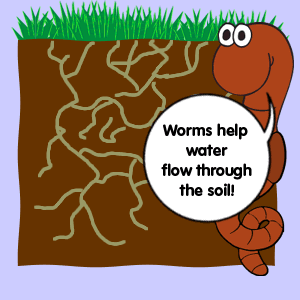Top Guidelines Of North Carolina Worms
Top Guidelines Of North Carolina Worms
Blog Article
What Does North Carolina Worms Do?
Table of ContentsThe Best Strategy To Use For North Carolina WormsHow North Carolina Worms can Save You Time, Stress, and Money.Little Known Facts About North Carolina Worms.Not known Factual Statements About North Carolina Worms
Example: 1-gallon of worm spreadings to 4 gallons of potting mix. Do NOT use a potting mix that has chemical fertilizers in it. Review the labelit will certainly say. 1/2 cup in all-time low of the planting hole for smaller sized plants. 1 cup for larger plants. ie. tomatoes, green peppers, summer squash, and so on.
The enhancement of tea can additionally add increased microbial biomass to your dirt. You can constantly side-dress your plants with worm spreadings at any moment. Simply bear in mind, the microbes will pass away if subjected to UV rays (Sun), so be sure to cover the castings with an inch or so of dirt.
This baffled them for years till the testing techniques became better. It would certainly get much better(with even more castings), level off, and then decrease. Too lots of worm spreadings would certainly increase the growth to a pace that the plant might not recoup from.
The Only Guide to North Carolina Worms
Many herbicides service this same principle. So, 20% by quantity seems to be the "Sweet Spot". I have stated the merits of worm spreadings for regarding 2000 words. What regarding the various other side of the coin? Nothing is best. Worm spreadings are no different. It takes some time to produce high quality worm castings.
Worm castings certainly cost even more than chemical fertilizers. Worm castings are on the less costly end of organic fertilizers. (50 gallons per year) It is a much harder and really costly investment to create huge quantities of worm castings.

Creating a healthy and balanced soil might be the greatest advantage of worm castings. We went over worm castings NPK and likewise the correct nutrient analysis that must apply to worm castings.
Examine This Report about North Carolina Worms
Ultimately, we discussed some of the drawbacks connected with worm castings. I covered a whole lot of product in this article. There are a lot of links (inner and exterior). If you would certainly like more info on a particular subject, please click through the web links to find out more. As constantly, really feel cost-free to comment or ask questions.
The vertical burrows are usually open, although the worms top the top with residue and excrement. Origins need oxygen for their growth, whereas they produce carbon dioxide that needs to leave the dirt.
Earthworms raise porosity by 2 systems: (1) by creating long-term burrows, and (2) by enhancing dirt aggregation. Aggregation is enhanced by the blending of soil and natural matter in the earthworms' intestines. Where to buy worms in NC. These highly stable aggregates are transferred by some earthworms in their burrows, and by others at the surface of the dirt


In one more study, earthworms were approximated to eat 4 to 10 percent of the leading 6 inches of the dirt each year. Dirt compaction decreases the porosity of the soil.
The Buzz on North Carolina Worms
Normal earthworm populations can easily consume 2 lots of dry matter per acre each year, partly digesting and blending it with dirt. The significance of earthworms to mix surface deposit with dirt ends up being very clear in dirts that do not have any type of earthworms. The majority of our Pennsylvania soils contend least some earthworms, and the result of their complete absence, therefore, can not be kept in mind.
(https://alive2directory.com/gosearch.php?q=http%3A%2F%2Fwww.northcarolinaworms.com%2F)In these soils, the development of topsoil with practical natural issue web content did not take location, resulting in bad crop growth. Once the cause was established, the government of the Netherlands began a project to introduce earthworms. After the introduction of the earthworms, a dark topsoil layer was formed, and crop growth raised considerably.
They live primarily from partly decayed organic matter that is currently included in the dirt. These species ingest large quantities of soil that they mix with absorbed plant residue in their intestines.
Their burrows continue to be open, although they top the top with plant deposit that they draw to the entry. These species consume significant amounts of dirt that they mix with digested deposit in their guts. Their waste matter is primarily transferred at the surface of the dirt. The nightcrawler Lumbricus terrestris is the most prominent participant of this team.
Report this page